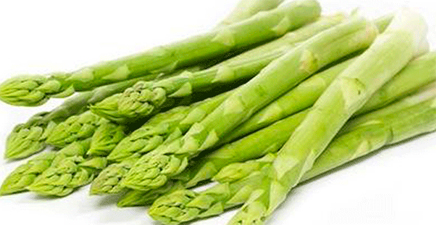| |
|
| Asparagus |
| |
 |
| |
Yanuq has chosen this month the asparagus becuase of its delicate flavor. This vegetable can be eaten alone or as a side dish to serve with meat and fish. In Peru we have the privilege of harvesting asparagus all year round. Asparagus is one of the most nutritionally well-balanced vegetables, as the leader among vegetables in supplying folic acid. Its wealth of nutrients, fiber and very low sodium and calorie content make asparagus a nutritionally wise choice for today's health-conscious consumer. It is low in sodium, a good source of potassium, fiber, folacin, thiamin, vitamin B6 and Rutin, a compound which strengthens capillary walls.
HOW TO BUY AND STORE
Choose firm, brightly colored stalks with tightly closed tips.
It's best to eat Asparagus the day you buy it, as the flavor can begin to fade as time passes. If you can't eat it right away. The best way to store asparagus for a few days, is treating it like a bouquet of flowers: trim a small amount from the bottoms of the stalks with a sharp knife and place them in a tall glass with a little water in the bottom. Cover the top loosely with a plastic bag, and store in the refrigerator. Another way to keep them is in a plastic bag in the crisper section of your refrigerator and make sure you use within three to five days. This will keep the stalks firm and crisp until you are ready to cook them.
PREPARATION
The way you prepare your asparagus can depend upon its size.
The smallest spears will only need to have their very bottoms trimmed off before cooking.
The bottom portions of larger asparagus spears can be chewy and woody; they will either need to be snapped off or peeled. To snap off the tough portion, simply grasp the stalk with both hands and bend the bottom portion until it breaks off. The asparagus will naturally break off at the point where the tender portion ends and the tough, stringy part begins.
If you want to be less wasteful, you can peel your asparagus instead. Simply lay a stalk of asparagus flat on the countertop and strip away the tough outside layer with a vegetable peeler, beginning just below the tip and working your way towards the bottom.
The fatter spears will need to be trimmed and either steamed or boiled in order to be tender.
While some people prefer the smaller spears for their delicacy and tenderness, others prefer the fatter ones for their more robust flavor and a meaty texture they can really sink their teeth into.
COOKING
Steaming: This may be the best way to cook Asparagus. Bring an inch or two of water to a boil in a pot. Arrange Asparagus in a steamer basket, making sure the water doesn't seep into the bottom of the basket. Cover and steam. Between 2 to 3 minutes should be just about right, but larger spears may take a little longer. Dont steam too long as the spears will overcook.
Sautéing: Place Asparagus in a skillet or wok lightly coated with olive oil. Cover and sauté slowly on medium-low heat for about 3 minutes or until tender.
Grilling: Lightly brush prepared Asparagus spears with olive oil. Sprinkle with salt and pepper, or garlic salt to taste. Grill over high heat for 2 to 3 minutes, or to desired tenderness.
Blanching: Bring 1 inch of water to a boil in a skillet. Add the Asparagus, cover and let it cook for only 2 to 3 minutes to soften spears to your preferred firmness.
Baking: Arrange one bunch (approximately 1 pound) of clean and trimmed Asparagus in a shallow baking dish. Top with olive oil, salt and pepper to your taste preference. Bake until tender or crunchy, depending upon your preference, about 12 to 20 minutes. |
|
|
| |
|
|